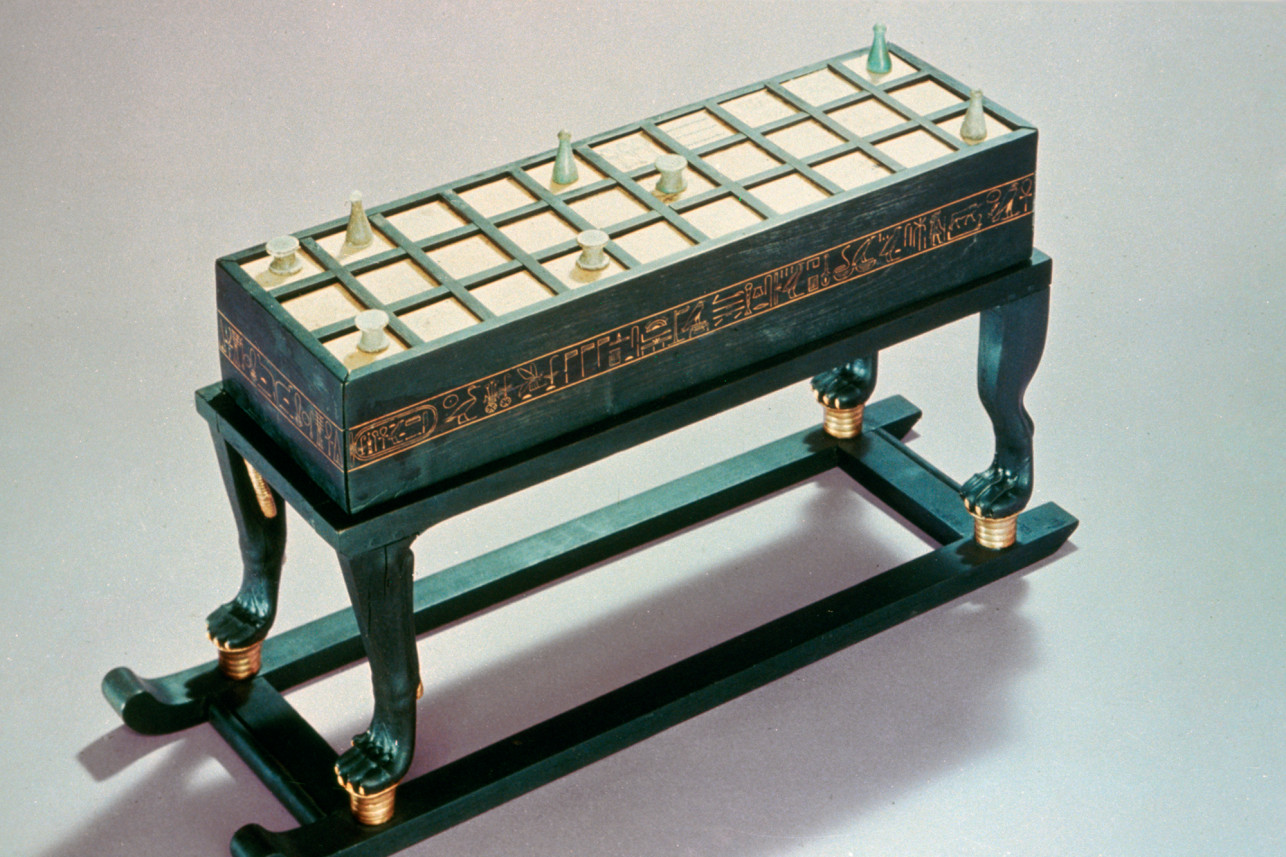I read to my daughter about Ancient Egypt. She’s in love with the time period, people, gods, and especially the process of mummification. By happenstance, in the most recent book we’re going through, her interest in Egypt intersected with my fondness for board games.
SENET
Senet is reportedly one of the oldest board games, dating to around 3,100 B.C. It was a two-player-only game played on a board of 30 squares arranged in three rows of 10 squares. The board was typically made out of wood, faience, ivory, or a combination of those materials. It had such a significance to the pharaoh Tutankhamun that he had four Senet boards buried in his tomb, the most lavish being an ebony and ivory board that had a drawer to store the counters and sat on ornate legs carved in the shape of animal feet.

While a fixed set of rules has not been found, historians says that each player had five pawns and the object of the game was for the player to move their pawns, and eventually get them off the board. By all accounts, a seemingly abstract strategy game with no theme. However, with the afterlife being a significant facet of Egyptian life, their texts over time began to describe the religious importance of the game. The New York Post reports that a Senet board found in the Rosicrucian Museum in San Jose, California continues that line of thinking.
Archaeologist Walter Crist writes an article about the new find in the The Journal of Egyptian Archaeology, saying that the game is a reflection of the ba – the person’s life force that is separated from its physical body at death – as it passes through Duat, the realm of the dead in ancient Egyptian mythology. The squares on the board are meant to represent the different stages along the journey. Crist also talks about the meaning of the word Senet and its connection to the afterlife.
The word senet in Egyptian means ‘passing,’ and may refer either to the game’s religious connotation of the ba passing through the duat or to the mechanics of gameplay, where playing pieces passed each other on the board.
https://journals.sagepub.com/doi/full/10.1177/0307513319896288
A fascinating breakdown of the board orientations and decoration, and an investigation of the Rosicrucian Museum’s Senet board is provided in Wrist’s article, which you can read further if you like: Passing from the Middle to the New Kingdom: A Senet Board in the Rosicrucian Museum.


